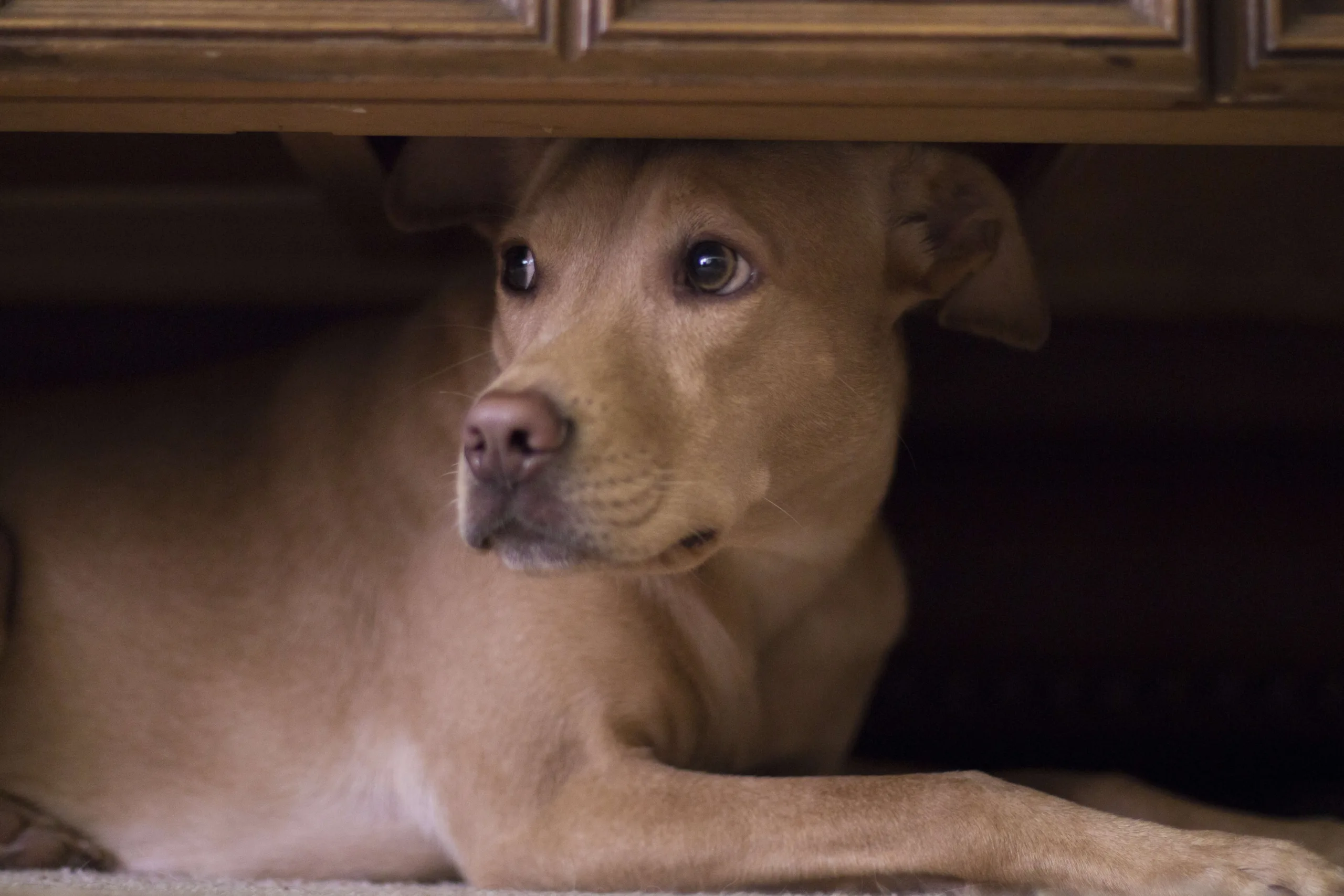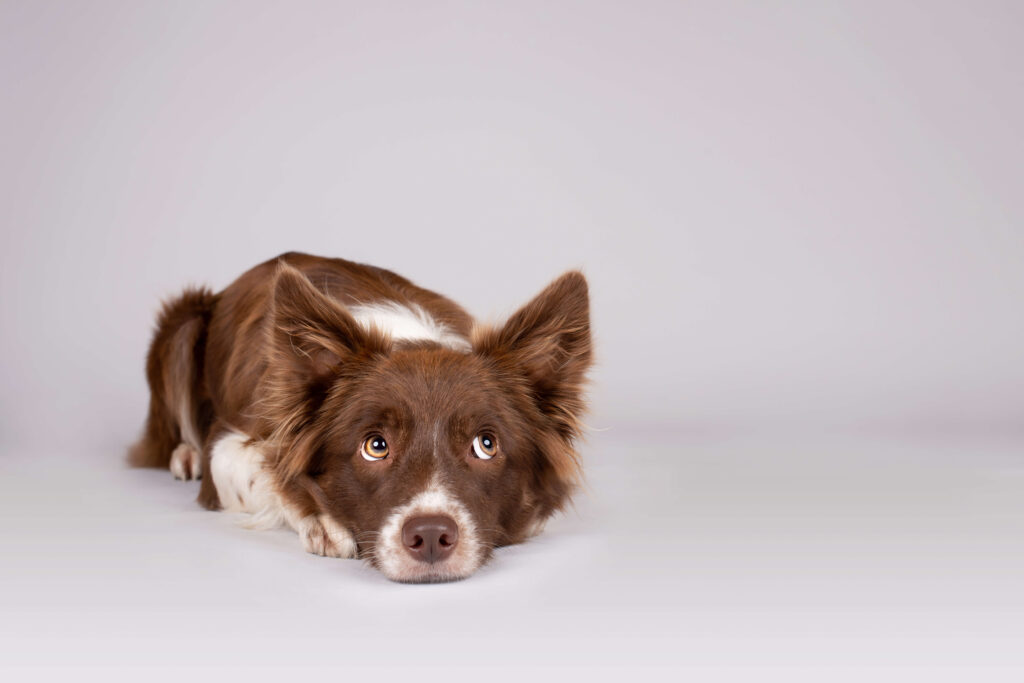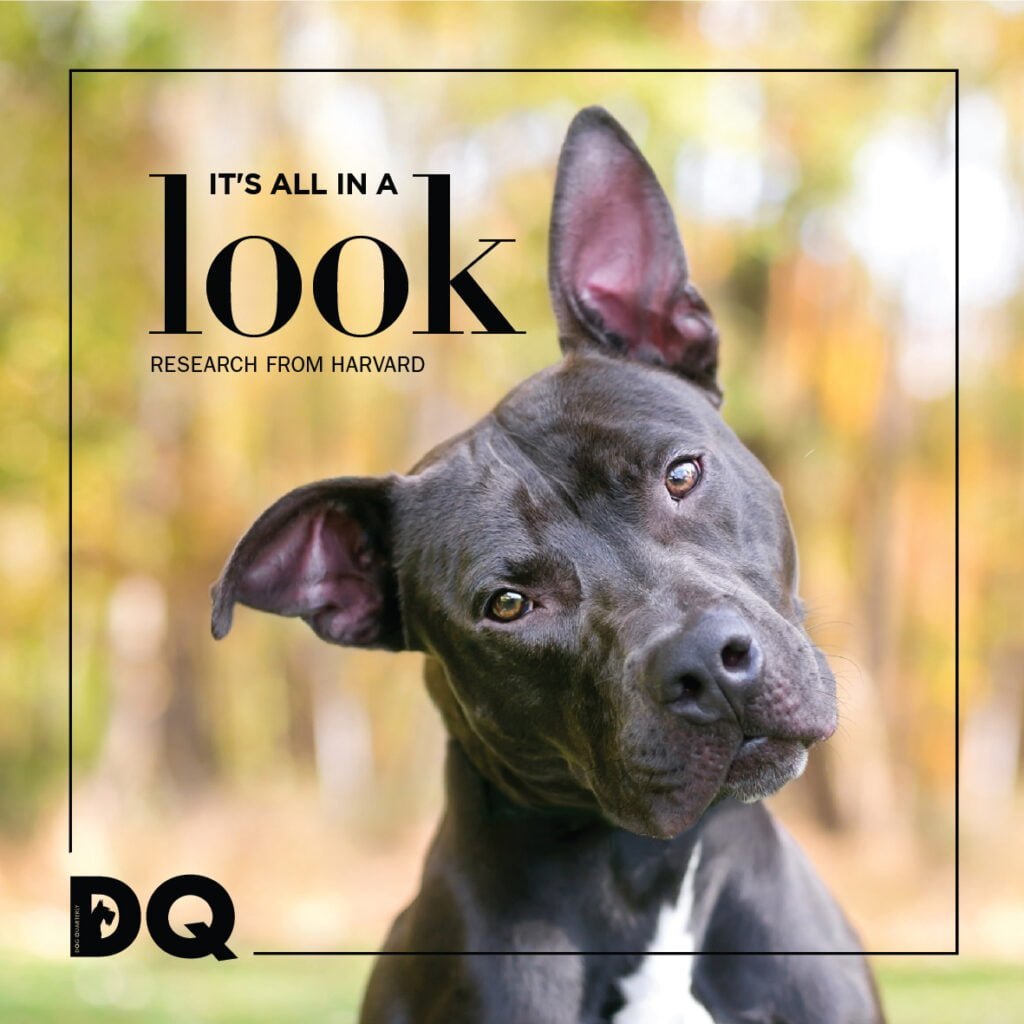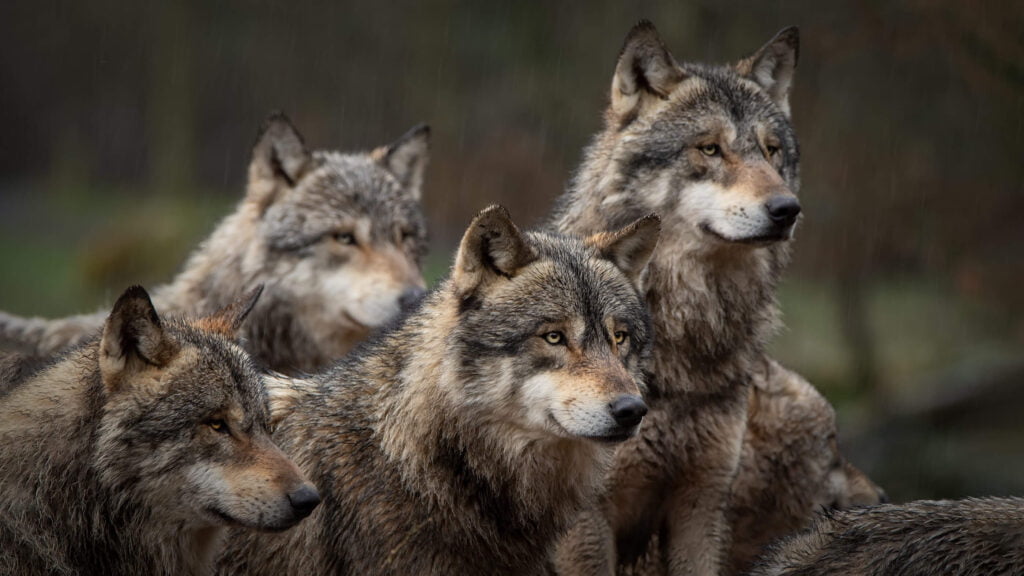Helping the fearful dog
There is abundant scientific evidence indicating that dogs experience intense emotions, just like humans. Sadly, fear is one of the most common emotions experienced by dogs and leads to many of the ‘behavioural issues’ owners describe in their dogs.
Whether caused by loud noises, other dogs, strangers, going to the vet, nail clippers or objects like vacuum cleaners, it’s distressing to see your dog showing signs of being fearful. The good news is that there are things you can try to reduce your dog’s levels of fear and help them to cope better with stressful situations.

What makes some dogs more fearful than others?
Some dogs display fear issues from an early age, while others are generally relaxed but have specific fears in certain situations. Sometimes the dog’s reasons for being more fearful are easy to explain, but other times it can be impossible to determine why they are as nervous as they are.
This list contains some of the more obvious factors that can cause dogs to become more fearful, but it is worth bearing in mind that even if your dog is not affected by one of these, it doesn’t make his fearful reactions any less ‘real’ or ‘important’:
- Genetics plays a sizeable role. It is well known that a fearful mother is likely to transmit this fear to her pups during pregnancy, and so is a mother-to-be who experiences high stress levels during her pregnancy.
- A lack of socialisation and environmental enrichment during puppyhood can cause fear issues later in life.
- Negative experiences during social encounters with other dogs can result in fear of other dogs or certain breeds or colours of dogs.
- An unpleasant experience, such as an attack by a dog or abuse from a human, can lead to long-term fear issues.
- Physical or mental health issues, especially pain, can result in fear and avoidance of being touched or approached.
- Toxicity from substances like cleaning products and air fresheners can elicit anxiety.
- The ageing process can precipitate fear responses, especially with dogs who develop Canine Cognitive Disorder or physical health issues.
- And, as mentioned above, occasionally, the cause is idiopathic, which means that we can’t determine what it is.
Chemistry of fear
Fear generates a cascade of chemical responses in the brain that have a powerful effect on your dog’s mind, emotions and body. Exposure to the trigger, such as a loud noise or an unknown dog approaching, sets off an immediate alarm response in the amygdala, the brain’s fear centre. The amygdala sends signals to the hypothalamus, and the release of corticotrophic releasing hormone prompts the release of cortisol. Cortisol sets off the fight or flight reflex, raises the blood pressure, speeds up the heart and respiration rate and dilates the pupils. Connections from the amygdala to the cingulate cortex tighten muscles, affecting the pitch of the voice, stimulating a growl and raising the hackles. The body goes into a state of emergency, and noradrenaline, which stimulates hyper-alertness, is produced and dispersed by the locus coeruleus in the brainstem. This all happens incredibly quickly.
Your dog has no control over these responses and can’t help but react to the perceived threat. He needs your help, as the rush of chemicals prevents him from thinking clearly. In essence, your dog genuinely believes his life is at risk during a fear episode.
The language of fear
Dogs reveal their emotions eloquently through facial expressions and body language. If you observe the first signs that your dog is afraid, you can then act quickly before his fear levels escalate to the point where he can no longer respond to you. Here’s what you need to look out for:
- Staring eyes
- Furrowed brow
- The whites of the eyes showing (whale eye)
- Closed, tight mouth
- Ears pinned back
- Averted gaze
- Tucked tail
- Cringing or low body posture
- Trembling
- Urination or diarrhoea
- Stepping back or withdrawing
- Displacement behaviours such as sniffing, sitting or licking the genitals
- Active escape behaviour
- Aggression or reactivity
If you see any of these behaviours, you should do what you can to reduce his stress levels before the situation becomes out of control.

Anxiety, fear, phobia and anger
One of the most helpful things you can do is develop good observational skills regarding your dog’s body language. This allows you to see what he is feeling and when i.e. what he is responding to and in what way. Is he reacting out of fear or anxiety? Is he phobic of something specific? Is he reacting out of anger? Understanding what your dog is experiencing can help you to manage difficult situations better.
Anxiety
Anxiety is the anticipation of future danger. This can be from either known or unknown origins, and it can negatively affect all aspects of life.
Fear
Fear is the body’s automatic response to an external perceived threat, and it profoundly affects thinking processes and decision-making.
A phobia
A phobia is an extreme, persistent, seemingly irrational fear resulting in panic and active avoidance.
Anger
Anger is an intense emotional response to frustration or a perceived threat.
How to help your fearful dog
- Work on gaining trust. This is vital to all aspects of the human-canine relationship, and it needs to be the foundation that you will build on in order to help your fearful dog. Trust is developed through always showing kindness, consistency and sensitivity towards your dog and their needs. Developing this trust takes time and a good understanding of canine behaviour. Ultimately, by taking measures to understand him and looking at the world from his perspective, you can begin to understand how confusing the world can be for your dog. This will allow you to empathise but also predict when problems may arise so you can ‘protect’ your dog accordingly. When your dog trusts you, he will feel confident that you have his best interests at heart, which will prompt him to look to you for guidance when he feels uncertain, anxious or afraid.
- Be calm. Let him see that you are his champion and ALWAYS on his side. If you react with fear or anxiety yourself in a particular situation, he will sense this, and it will escalate his fear. Even if your anxiety is about his reaction rather than the actual stressor, it will still affect him. In behaviour terms, this is called ’emotional contagion.’ Instead, take deep breaths and keep your body relaxed and your voice low and soft.
- Avoid and remove all sources of fear wherever possible until your dog can cope better. For instance, if your dog is afraid of other dogs, this may involve setting up enrichment games in the garden as a substitute for walks for a while or hiring a secure dog-friendly play area where he can exercise and play without the stressful presence of other dogs. This will enable his day-to-day stress levels to drop so that he can pay attention to you when you start working on easing his fears.
- Observe his body language and responses so that you can remove him from a situation as soon as you notice the very first signs of stress.
- Use lots of environmental enrichment to keep him calm. When you see the first signs of stress, drop small pieces of food on the ground for him to sniff out and eat. This will cause the release of feel-good endorphins in his body and help him feel more relaxed.
- Gradually introduce new experiences at a pace that he is comfortable with. Do not overwhelm your dog at this point, and show patience! Our dog does not think as we do and cannot rationalise like us – if he is afraid, he is genuinely afraid, and we need to respect this and give him the time and space he needs to cope with new experiences.
- When you feel he’s ready to be exposed to the source of his fear, do this from a distance and be careful not to move forward too quickly. You need to be prepared to go slowly and take steps back as necessary. You may even need to start over if you’ve gone too fast and he can’t cope.
- Praise and reward your dog for every positive response from him. This will teach him what you want from him, and the reinforcement with food and approval will boost his confidence.
Take home message
Fear is not an easy emotion to manage in either humans or canines. In both cases, time needs to be taken to understand the fear, increase confidence and coping ability, and gradually deal with the fear in ‘baby steps’. If you take the time your dog needs and do not rush the process, you will soon find that you have a much braver and more confident canine companion. On the other hand, if you ignore the issue and expect your dog ‘to get on with it’ your dog will suffer from this fear and anxiety for the rest of his life.



